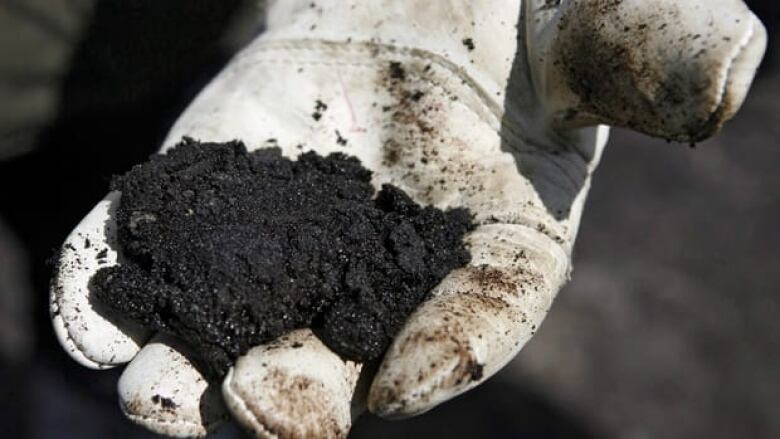Groups call for inquiry into oilsands steam extraction
Bitumen leak at project in northeast Alberta sparks concerns

More than 20 groups are calling for a public inquiry into the safety of oilsands extraction techniques that use steam.
The organizations made their demand to the Alberta Energy Regulator (AER)Tuesday as bitumen continues to ooze out of the ground at a project owned byCalgary-based Canadian Natural Resources Ltd. (CNRL).
- Alberta Primrose oilsands leaks contained, says CNRL
- Alberta leaks prompt questions over oilsands extraction
- Alberta oil leak cause stymies industry, scientists
The damage at CNRL's Primrose East, located 250 kilometres northeast of Edmonton,has been contained to a 13.5-hectare area and the company has been cleaning up an estimated 20 barrelsnearly 3,200 litresthat continues to seep out every day at ever-declining rates.
But thegroups claim thisisn't the first example of a unexplained failure of an oilsands operation like Primrose.
"It is time for a broader discussion of the safety and regulation of steam injection given these recurring events," said Greenpeace campaigner Mike Hudema said in a news release.
"The AER needs to reassure the Alberta public and other stakeholders that it has the regulations in place to prevent similar incidents from occurring in the future."
CNRL says faulty old wellbores are to blame for the Primrose East leak, though the AER says it still doesn't know the cause.
An investigation by Alberta's energy watchdog into a similar 2009 leak at Primrose said a potential cause could have been "geologic weaknesses in combination stresses induced by high-pressure steam injection."
But Canadian Natural has said it's unlikely that damaged caprock was behind that spill and the more recent one, which was first detected in late Juneabout the time that heavy rains caused severe flooding in southern Alberta.
'Huff and puff' method questioned
To extract bitumen at Primrose, Canadian Natural uses a method called high pressure cyclic steam stimulation, sometimes described as "huff and puff."
It involves injecting steam into a reservoir through a well, letting it soak for a while and then drawing the softened bitumen to the surface through the same well.
The extraction method, which companies have used for decades, involves fracturing the rock to let the steam through, but not so much that it allows bitumen to flow to the surface.
A more common technique is steam-assisted gravity drainage, or SAGD, which pumps steam into one well and uses another well below it to bring the bitumen to the surface.
Though cyclic steam stimulation has grabbed the most headlines recently, the environmental coalition wants the Alberta Energy Regulator to examine both techniques.
About half of current oilsands production comes from in-situ methods that pump steam deep underground to soften the tarry bitumen and enable it to flow through to the surface. The rest comes from open-pit mining of the oilsands.
The depth of the oilsands deposit is one of the factors that determine which method is used, but the trend has been towards more in-situ extraction methods.
The in-situ method will eventually account for about 80 per cent of the oilsands extractions, said Alberta Wilderness Association'sCarolyn Campbell.
"Therefore, it's important that we get this right," Campbell said in the groups' statement.












_(720p).jpg)


 OFFICIAL HD MUSIC VIDEO.jpg)
.jpg)



























































































